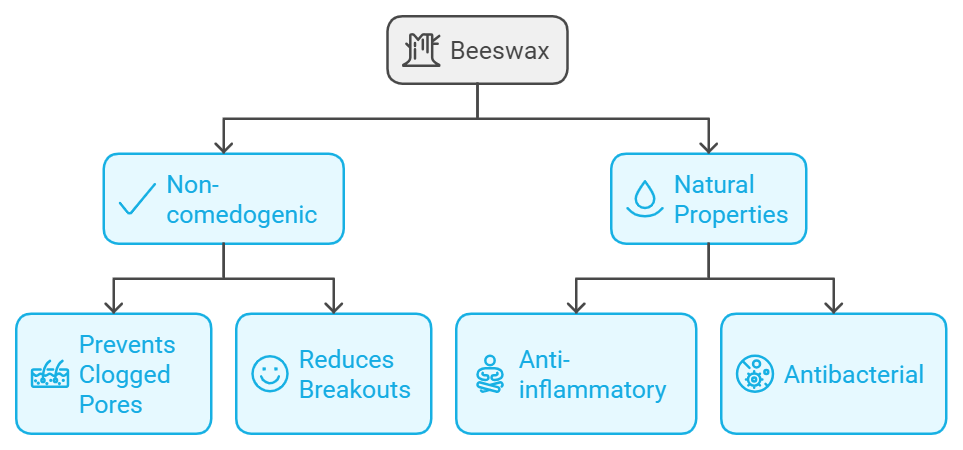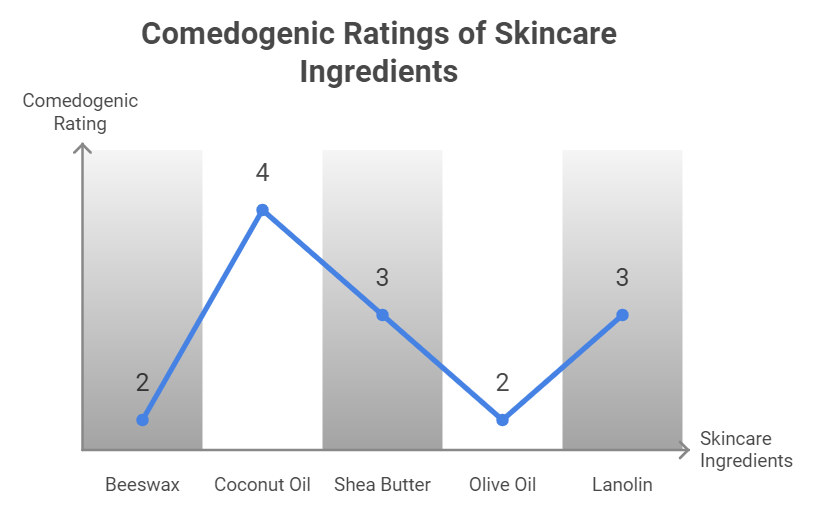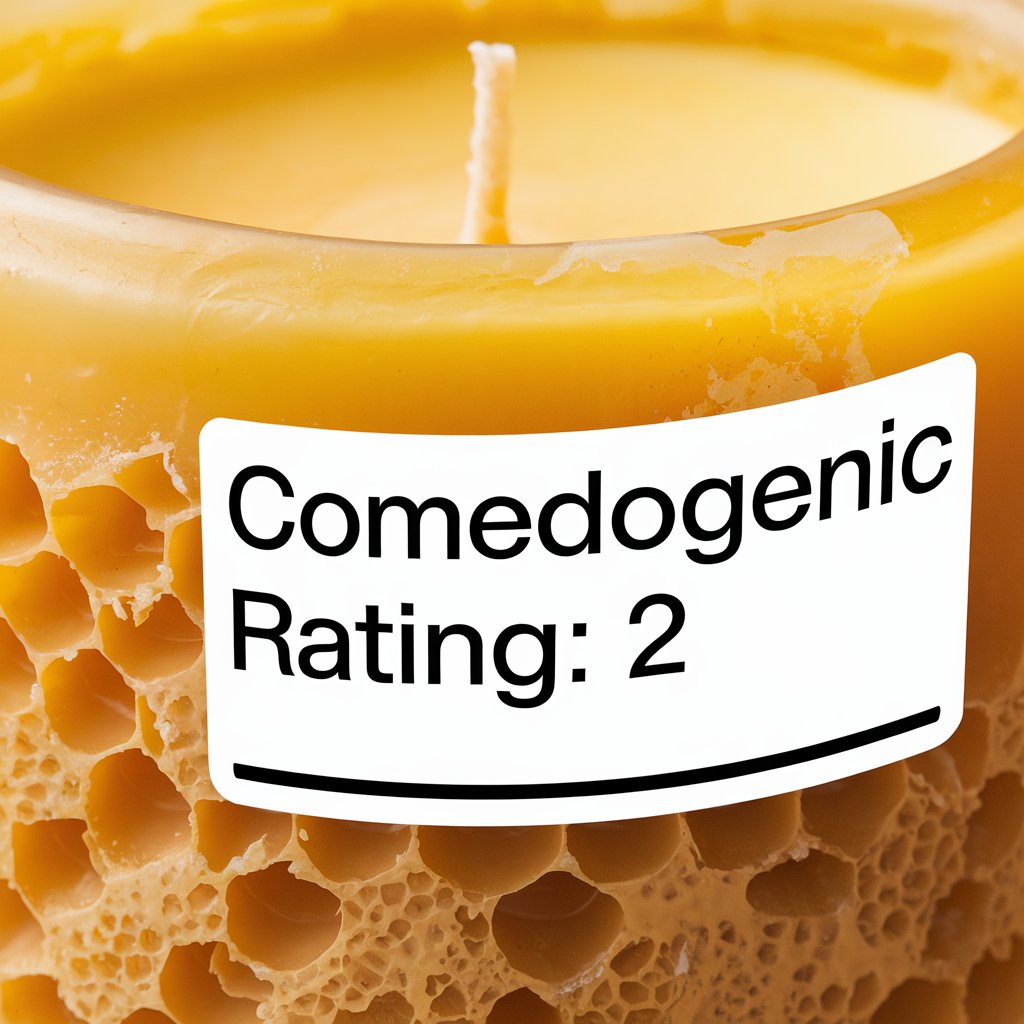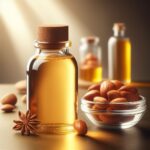- Beeswax ranks low to moderately (1-2) on the comedogenic scale, meaning it has a small risk of clogging pores.
- Those with oily or acne-prone skin should exercise caution, as beeswax’s occlusive properties may trap oils and lead to breakouts.
- Beeswax is generally safe, but allergic reactions and heaviness on the skin can be potential risks for some users.
For centuries, beeswax has been an essential ingredient in various skincare formulations, including natural lip balms and DIY moisturizers, known for its moisturizing and protective qualities. As the trend toward non-comedogenic skincare continues to grow, one critical question surfaces: Is beeswax non-comedogenic? In other words, does it clog pores and potentially lead to acne? This article dives deep into the research, dermatologist insights, and user experiences to reveal whether beeswax should be part of your skincare routine or avoided altogether.
What Does Non-Comedogenic Mean?
Before exploring beeswax itself, it’s essential to understand the term “non-comedogenic.” Simply put, non-comedogenic products are formulated to minimize the risk of clogging pores. Pores are tiny openings in the skin that release sweat and sebum (oil). When these pores are clogged, they can lead to blackheads, whiteheads, and acne breakouts.
People with oily or acne-prone skin tend to look for non-comedogenic products to minimize the risk of further skin irritation. However, there is no universal or regulated scale for measuring a product’s comedogenicity. Some products labeled as non-comedogenic may still cause reactions in certain individuals. This brings us to the next question: How do we measure whether beeswax is non-comedogenic or not?
Is Almond Oil Comedogenic? Here’s Why It Might Be for Some People
How Do Dermatologists Measure Non-Comedogenicity?
There isn’t a one-size-fits-all scale, but dermatologists often rely on a rating system from 0 to 5:
-
0-1: Virtually no risk of clogging pores.
-
2-3: Low to moderate likelihood of clogging pores.
-
4-5: High chance of clogging pores.
So, where does beeswax fall on this scale?
The Comedogenicity of Beeswax: Is it Low or High?
Based on the available research and dermatologist opinions, beeswax typically falls within the 1 to 2 range on the comedogenic scale. This means it is considered low to moderately comedogenic, suggesting that while it is not entirely risk-free, it generally poses little threat to clogging pores. It’s far less likely to cause breakouts than heavier ingredients like mineral oil or synthetic waxes.
However, individual experiences may vary. While most people will find beeswax beneficial, those with oily or acne-prone skin should consider a patch test to ensure their skin doesn’t react poorly. Some studies note that the comedogenicity of beeswax can vary depending on its source and any potential contaminants or impurities present in the product.

How Beeswax Works for Different Skin Types
Let’s break down how beeswax performs on different skin types:
Dry or Sensitive Skin
Beeswax is ideal for those with dry or sensitive skin. Its occlusive nature helps to lock in moisture, preventing the skin from drying out. It doesn’t suffocate the skin but provides a breathable barrier, making it perfect for winter skincare routines. Many products designed for sensitive skin include beeswax due to its soothing properties and ability to protect without irritation.
Oily or Acne-Prone Skin
For individuals with oily or acne-prone skin, the decision to use beeswax may require more caution. While it ranks low on the comedogenic scale, its thick and occlusive texture might trap oils and dead skin cells, potentially contributing to breakouts. It’s always wise to use beeswax products in combination with lightweight, non-comedogenic oils, like jojoba or grapeseed oil, to minimize the risk of clogged pores.
Dermatologist Opinions on Beeswax
To offer a more balanced perspective, let’s look at what dermatologists have to say:
-
Dr. Shereene Idriss, a New York-based dermatologist, explains that beeswax is an excellent natural option for people with dry or compromised skin. However, she notes that those with acne-prone skin should test the product first, as reactions can vary from person to person.
-
Dr. Joshua Zeichner, another leading dermatologist, points out that beeswax’s anti-inflammatory properties can benefit individuals suffering from inflammatory acne, but he also warns that its occlusive nature can potentially trap sebum, leading to breakouts in some cases.
Beeswax in Skincare Formulations
Beeswax is commonly found in a range of skincare products, including lip balms, lotions, and creams. It acts as a stabilizing agent that helps products maintain their shape while providing deep moisturization. Some brands combine beeswax with other non-comedogenic ingredients, making it suitable for a wider range of skin types.
Popular Combinations with Beeswax
-
Jojoba Oil: With a comedogenic rating of 1, jojoba oil pairs well with beeswax, providing hydration without clogging pores. This combination is especially beneficial for those with acne-prone skin.
-
Hyaluronic Acid: Known for its ability to retain moisture, hyaluronic acid in combination with beeswax provides long-lasting hydration without overwhelming oily skin types.

Beeswax in Lip Balms: Any Impact on Pores?
Lip balms are one of the most popular uses of beeswax. The skin on the lips does not have oil glands, so the risk of clogged pores is virtually non-existent in this area. Beeswax helps to keep lips moisturized and protected from environmental damage without any pore-related concerns.
Statistics: How Many Skincare Products Use Beeswax?
According to a 2022 report by Mintel, over 35% of natural skincare products include beeswax as a key ingredient. Its popularity is driven by the demand for clean, sustainable, and natural beauty options.
Potential Risks: What You Should Watch Out For
While beeswax is generally considered safe for most skin types, there are a few risks to be aware of:
Allergic Reactions
Some individuals may be allergic to bee products, including beeswax. If you have a history of reactions to honey or other bee-related substances, be cautious and always perform a patch test before using beeswax products.
Heaviness on Skin
As an occlusive agent, beeswax might feel too heavy for people with oily skin. It can trap oils and lead to clogged pores if combined with other comedogenic ingredients. However, when balanced with the right non-comedogenic oils, this risk can be minimized.
How to Choose the Right Beeswax Product for Your Skin
When adding beeswax to your skincare routine, it’s important to be mindful of the product’s overall formulation. Here are some key factors to consider:
1. Check the Ingredients List
Not all beeswax-based products are created equal. Always check the ingredients list to see what other components are included. Look for non-comedogenic oils such as:
-
Jojoba oil (Comedogenic rating: 1)
-
Sunflower oil (Comedogenic rating: 0)
-
Argan oil (Comedogenic rating: 0)
These oils work synergistically with beeswax to provide moisture without clogging pores. On the other hand, avoid products that include heavier oils like coconut oil (Comedogenic rating: 4) if you are prone to acne.
2. Focus on Lightweight Formulas for Oily Skin
If you have oily skin but still want to enjoy the benefits of beeswax, look for formulations that are light and absorb easily into the skin. Many moisturizers or serums include a blend of beeswax with lighter ingredients like aloe vera or glycerin, which can hydrate without leaving a greasy finish.
3. Choose Beeswax-Based Balms for Specific Areas
For dry patches, lips, or eczema-prone areas, a thicker beeswax-based balm can work wonders. However, these heavier formulations should be applied sparingly to acne-prone areas like the face, as the occlusive nature of the product can increase the risk of breakouts. Many beeswax-based balms include additional calming ingredients like chamomile or calendula, which can help soothe irritated skin.

I’m a devoted organic skincare enthusiast, passionate about the natural, wholesome goodness that organic products bring to our skin.
Organic skincare isn’t just a hobby for me—it’s a lifestyle. Every product I use, recommend, and write about has been carefully chosen for its purity and effectiveness. Everything I write about is backed by scientific studies, dermatologists’ opinions, and user experiences.
I also excel at tackling skincare challenges with innovative, organic solutions.


